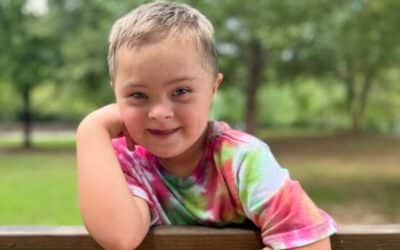Communication is an intrinsic part of who we are as humans. From the first cry of a newborn to the detailed conversations of adults, effective communication plays a pivotal role in understanding others and expressing our needs, wants, feelings, and ideas. For children with speech, language, and communication delays/disorders, the inability to understand expectations and express their ideas effectively can lead to frustration, which may manifest as behavioral problems. In this article, we will answer the question, “Can communication problems cause behavior problems?” We will also offer ideas to support positive behaviors for children with communication difficulties.
How Communication Influences Behavior
- Expressing Needs and Wants: Just like adults, children have needs, wants, feelings, and ideas. If a child cannot articulate hunger, discomfort, or another need, they might become frustrated and resort to behaviors like crying, tantrums, or physical aggression.
- Social Interaction: Effective communication is crucial for social interactions. Without the ability to fully understand others and express ideas, ask questions, or join in play, a child might feel isolated, leading to withdrawal or disruptive behaviors to initiate an interaction or gain attention.
- Understanding and Processing Information: Children with communication delays may not understand instructions, expectations or cues from their environment, and transitions between activities, leading them to becoming overwhelmed and react using behavioral means.

Navigating Behavioral Situations
1. Be Patient and Empathetic: Understand that the child isn’t acting out deliberately. They’re likely experiencing frustration due to their communication challenges.
2. Use Non-Verbal Cues: Body language, gestures, visual aids, or sign language and other forms of Augmentative and Alternative Communication can help bridge the communication gap. This can reduce a child’s frustration and improve their understanding and expression.
3. Establish a Routine: Predictability can provide comfort. By establishing a routine, children can anticipate what’s coming next, reducing anxiety and resultant behavioral issues.
4. Seek Professional Help: Speech pathologists, occupational therapists, social workers, and behavioral specialists can provide tailored strategies to support behavior.
5. Educate Others: Inform family, friends, and peers about the child’s challenges so they can adapt their approach and expectations, fostering a supportive environment.
6. Set Your Child Up for Behavior Success: Anticipate behavioral challenges your child may experience. Make sure they have preparation for what to expect such as a picture schedule or sequence, prior exposure to social skills video or story, sensory supports, and positive behavior reinforcement.
FAQs
- Are all behavioral issues linked to communication disorders?
- No, while communication disorders can result in behavioral problems, not all behavior issues stem from them. Factors like environment, sensory concerns, fatigue, hearing loss, health issues, or other concerns can also play a role.
- How can parents distinguish between “typical” tantrums and those linked to communication problems?
- While all children have tantrums, frequent outbursts, especially in situations where understanding and using language to communicate is key, might indicate a link.
- Do all children with communication disorders develop behavior problems?
- No, each child is unique. Some might develop behavioral challenges, while others might not.
Additional Resources
- Resource Library – National Center for Pyramid Model Innovations (challengingbehavior.org)
- Free Spirit Publications
- Language Disorders and Problem Behaviors: A Meta-analysis | Pediatrics | American Academy of Pediatrics (aap.org)
- Speech and Language Delays Can Lead to Behavior Problems (expressable.com)
- Study Finds Correlation Between Late-Talkers and Severe Tantrums – BabySparks
Summary/Conclusion
While it can be challenging to parent a child with speech, language, and communication delays/disorders, understanding the link between communication and behavior is crucial. With patience, education, and the right supports, parents can navigate behavioral challenges and create a supportive environment for their child to thrive. Remember, every child is unique, and with love and understanding, they can reach their full potential.




0 Comments